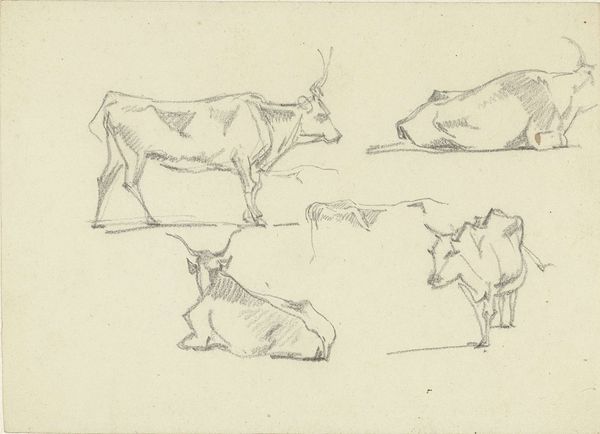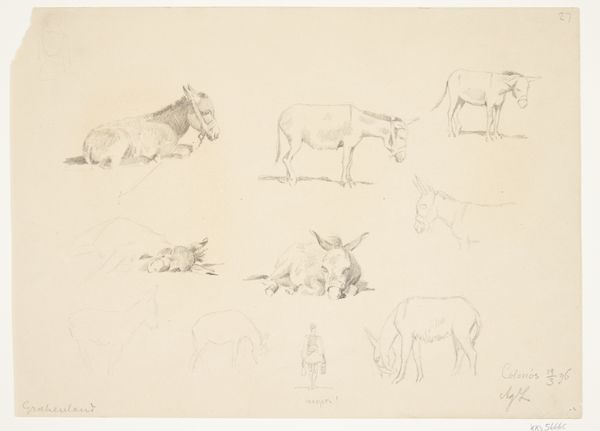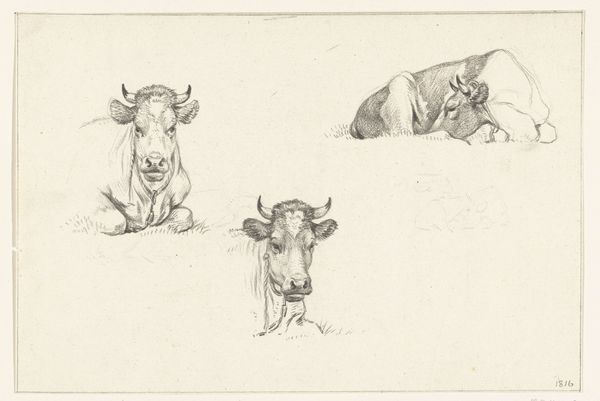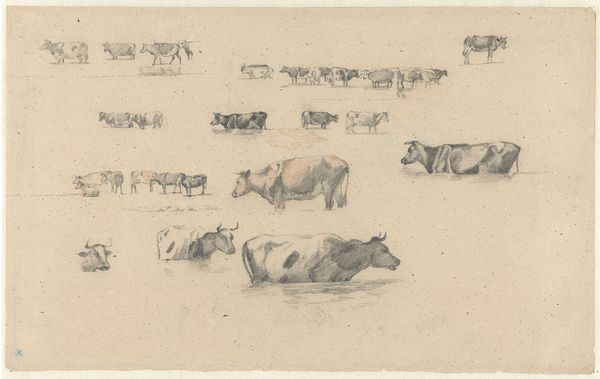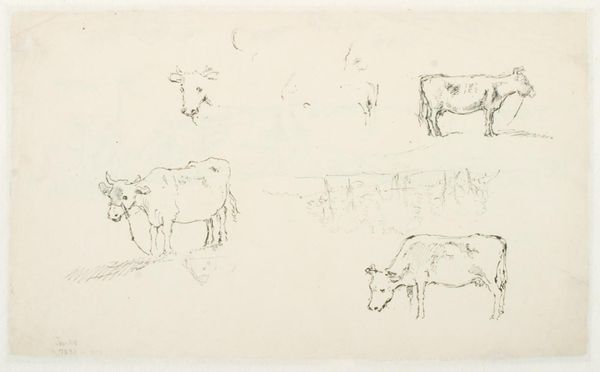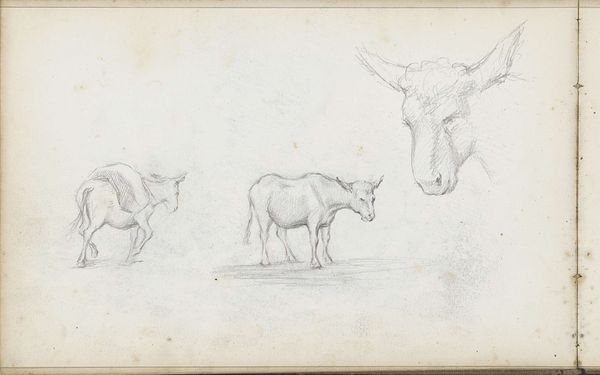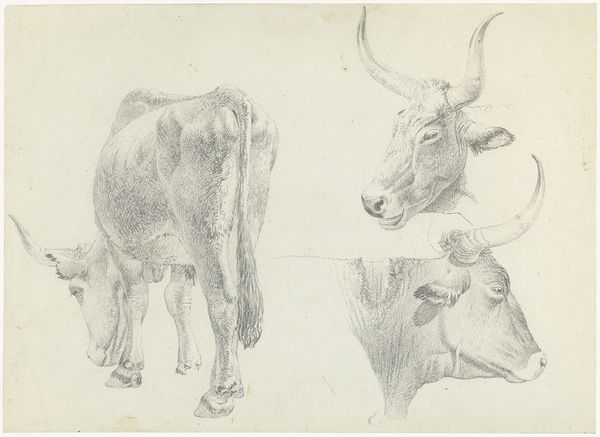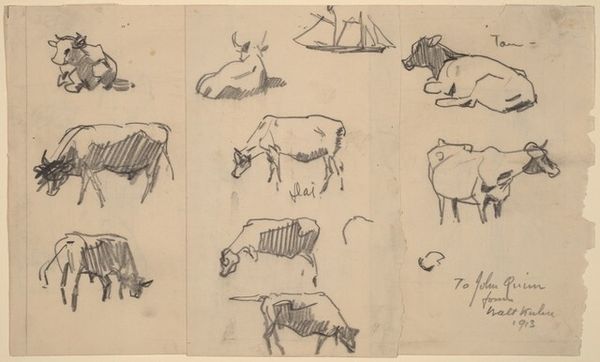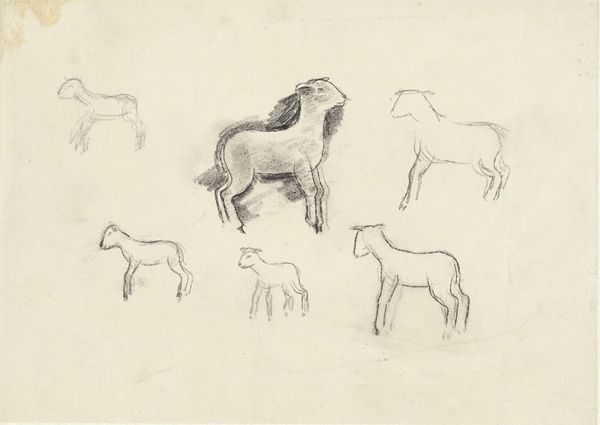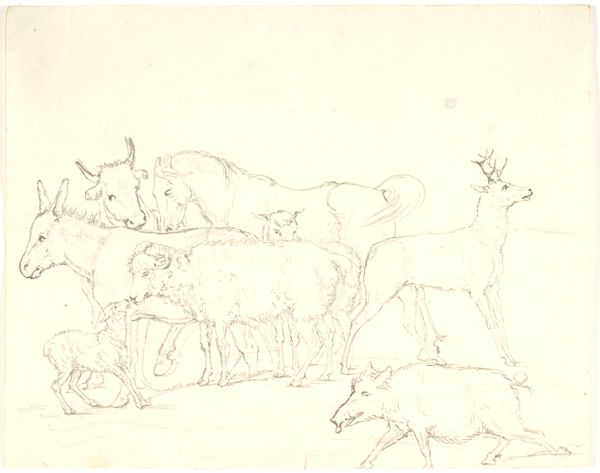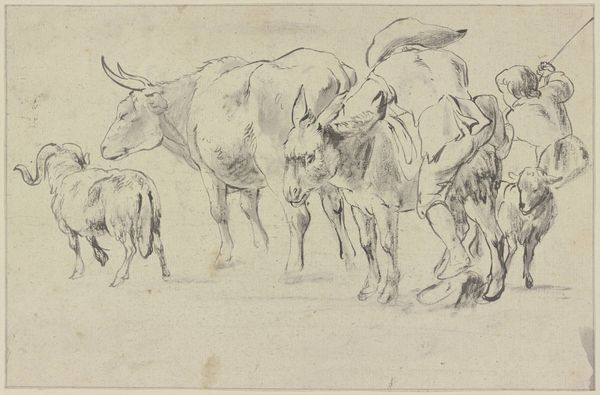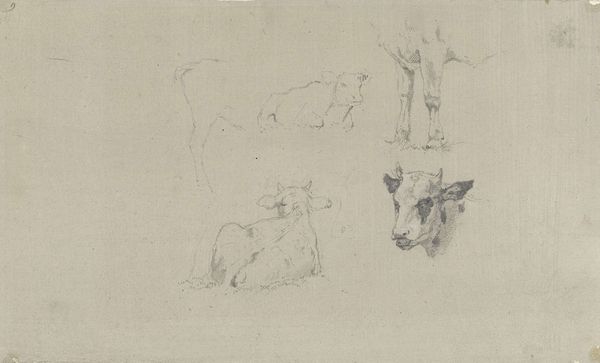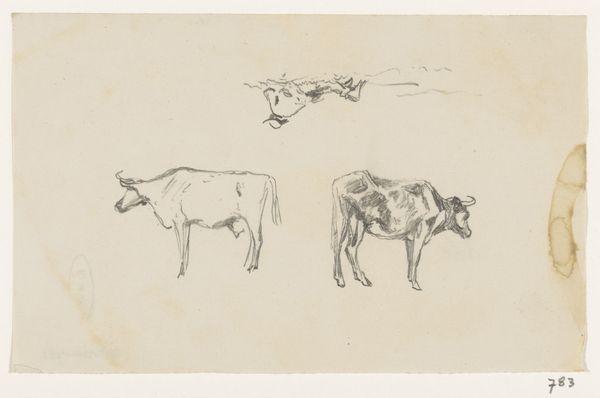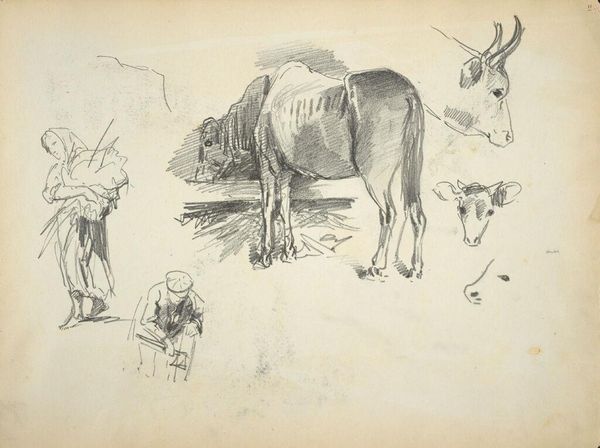
drawing, pencil
#
portrait
#
drawing
#
animal
#
impressionism
#
landscape
#
pencil
Copyright: Public Domain: Artvee
Curator: We're looking at "Studies of Cattle," a pencil drawing from around 1872 by John Singer Sargent. What are your initial impressions? Editor: There's a lightness to it, almost breezy. Sargent’s pencil sketches really capture movement and the feel of sunlight. It gives me the sense that he was in a field rapidly trying to take it all in. I like how unstudied they appear. Curator: Sargent was known for his portraits of the wealthy and powerful, so it's interesting to see him focusing on such humble subjects. It certainly reflects the influence of impressionism, with its focus on capturing fleeting moments. Editor: I think there's more than that going on. Pencil itself is a very humble medium, mass-produced, essential to basic communication. It feels very grounded, in contrast to the kind of grand artistic statements Sargent usually made with oils and more high-status materials. I’m drawn to its accessibility. Curator: Indeed. And there's a definite move towards Realism during this time, artists choosing ordinary people and scenes instead of idealised, classical subjects. The rise of the bourgeoisie and their desire to see their own world reflected in art plays a huge role. Editor: Precisely! But notice too how Sargent doesn’t hide the marks of process; he shows you the labor involved. Those quick, repetitive strokes—you can practically see him building up the forms of the cattle. It’s honest, in a way his more polished works often aren’t. Curator: The different poses of the cattle, though – eating, standing, face on – also suggests Sargent studying his subject from multiple angles, refining his understanding. It reveals the academic approach he took as a young artist honing his craft. These aren't just studies of cattle; they’re studies in seeing. It’s practice and repetition made visible to a new audience, democratizing access to an art form that was once exclusively high brow. Editor: Exactly. I’m intrigued now, thinking about the shift this embodies within art practices and patronage during that era! Curator: Well, looking at the material alongside these cultural factors definitely broadens our perspective, don't you agree? Editor: Absolutely, the pencil whispers stories that the gilded frame of a portrait often obscures!
Comments
No comments
Be the first to comment and join the conversation on the ultimate creative platform.
